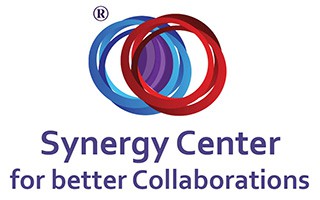Diversity’s a condition for synergy formation by default — it’s sort of a precondition. But diversity would require support of other conditions such as commitment, clear and defined boundaries, definition of organization’s vision and purpose, and acknowledgement of its existence.
You don’t need to have chemistry with your adversary for synergy, healthy competition or cooperation to thrive between you. However, if you are at the apex of your organization’s pyramid – like you’re a CEO, proprietor or manager – you must demonstrate the highest level of commitment. The reason is your subordinates look up to you – you’re their role model; they look for inspiration from you.
If there’s little demonstration of commitment and involvement for assimilating synergy approach by the managerial authority, don’t expect much from your workers or employees. In fact, organizations that lack synergy at administrative level usually fail.
Read to learn more about other conditions, which determine successful assimilation of synergy approach.
Flat Management Structure
As you start your company, your management structure is “flat” by default, and if you are a small family organization, “everyone does everything”. Boundaries – roles and responsibilities – are flexible and clear. However, as your company grows, you find it necessary to bring in processes, structures or systems of management, as boundaries become more unclear. You bring in more people into your team, and before you know it, you’re running a large organization.
In a large and complex organization, conflicts, chaos or disagreements are commonplace, and structures and procedures must be put in place to manage them. Naturally, as a founder, co-founder or partner, you find yourself at the apex of organization’s management. You supervise people below you; your organization has a hierarchical structure.
However, while synergy may be high between you and your colleagues in the administration, it must trickle down to the lowest hierarchical level. To do that, you should promote lateral relations, and discourage linear relations. In essence, you require a non-linear hierarchy – to manage chaos without necessarily putting pressure on the linear levels within your organization.
Non-linear Hierarchy
To create a non-linear hierarchy, you must reduce the appearance, or the level of perception of the appearance of inequality between managers and employees. Essentially, you need to reduce hierarchic characteristics of managerial culture and structure of your organization. Otherwise, there would be tension between functionaries at different ranks. When tension is high, communication and cooperation can be difficult to achieve.
Dr. Rami Ben-Yshai, in his book, Organizational Synergy: A Practical Guide posits that,
“We need to devote resources to learning the synergy perception and creating an explanatory platform which allows all participants to freely express themselves as individuals, rather than as representatives of the role they fill or the rank they hold.”
You’ve to be flexible with the locations when holding team meetings of employees of different levels. Usually, most organizations hold meetings only in the offices of the highest ranking members, but that shouldn’t be the case. Ensure that you give every member a chance to host meetings in their workstations and to provide a summary of the session.
A Case of Restructuring a Military Reward System
A military organization requested Dr. Ben-Yshai to restructure their reward system. It was of utmost importance for him to constitute a team, which draws members from different levels across all divisions and departments. As expected, sergeants found it difficult freely express themselves in front of their seniors.
Dr. Ben-Yshai created an environment to suppress inequality. He didn’t allow the team members to attend meetings with uniforms. In as much as he tried to discourage the members from wearing their medals of rank, he couldn’t. It was their culture, and this made it difficult for him to steer members toward synergy, because the atmosphere of otherness remained.
In a nut Shell…
When feelings of “otherness” remain, and members of lower rank perceive inequality, tension is bound to happen. The more hierarchy characterize your organization’s culture and structure, perceptions or feelings of inequality won’t go away. A non-linear hierarchic structure, which encourages lateral relations, instead of linear relations, can make it easier for communication and cooperation to occur; hence, synergy.




